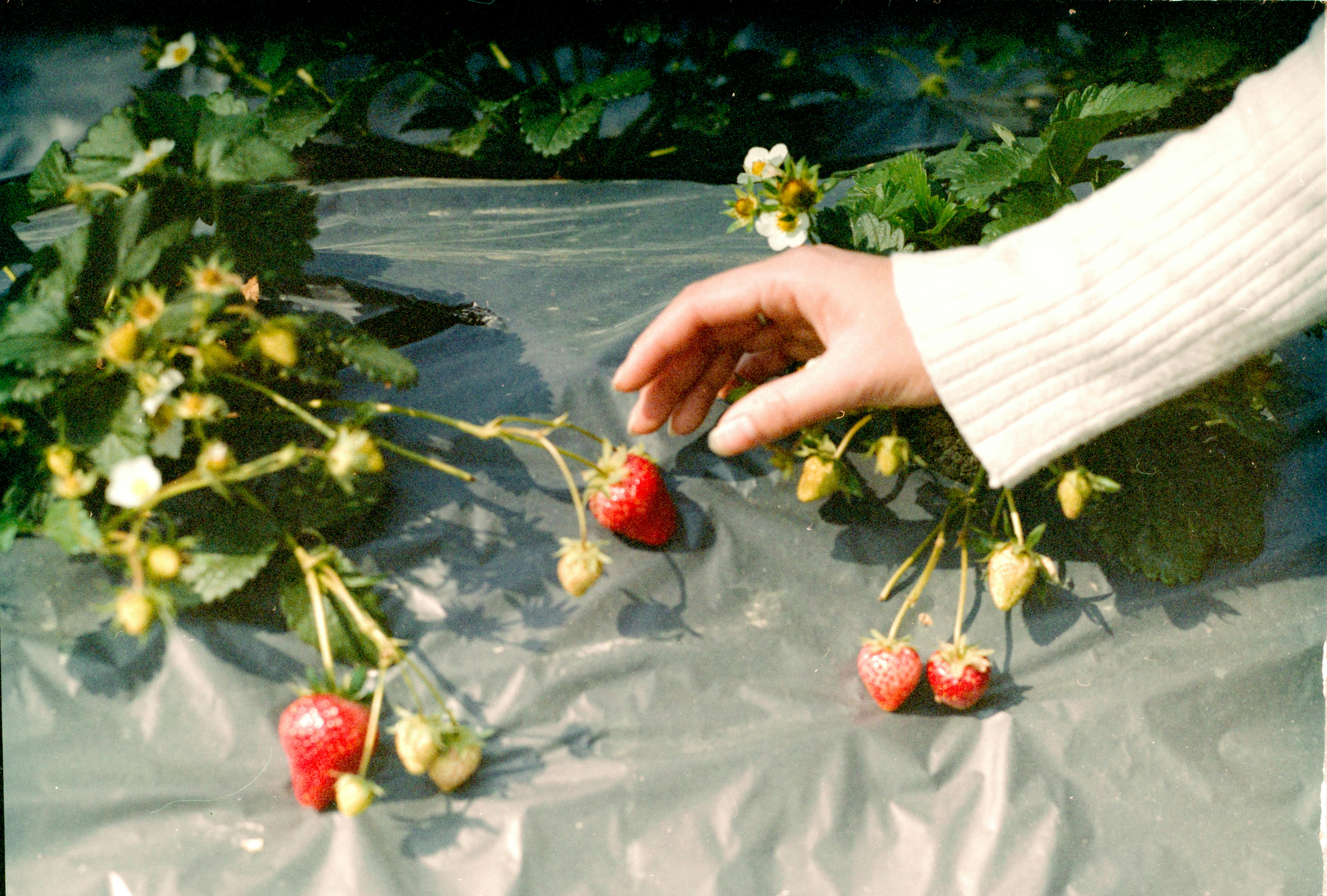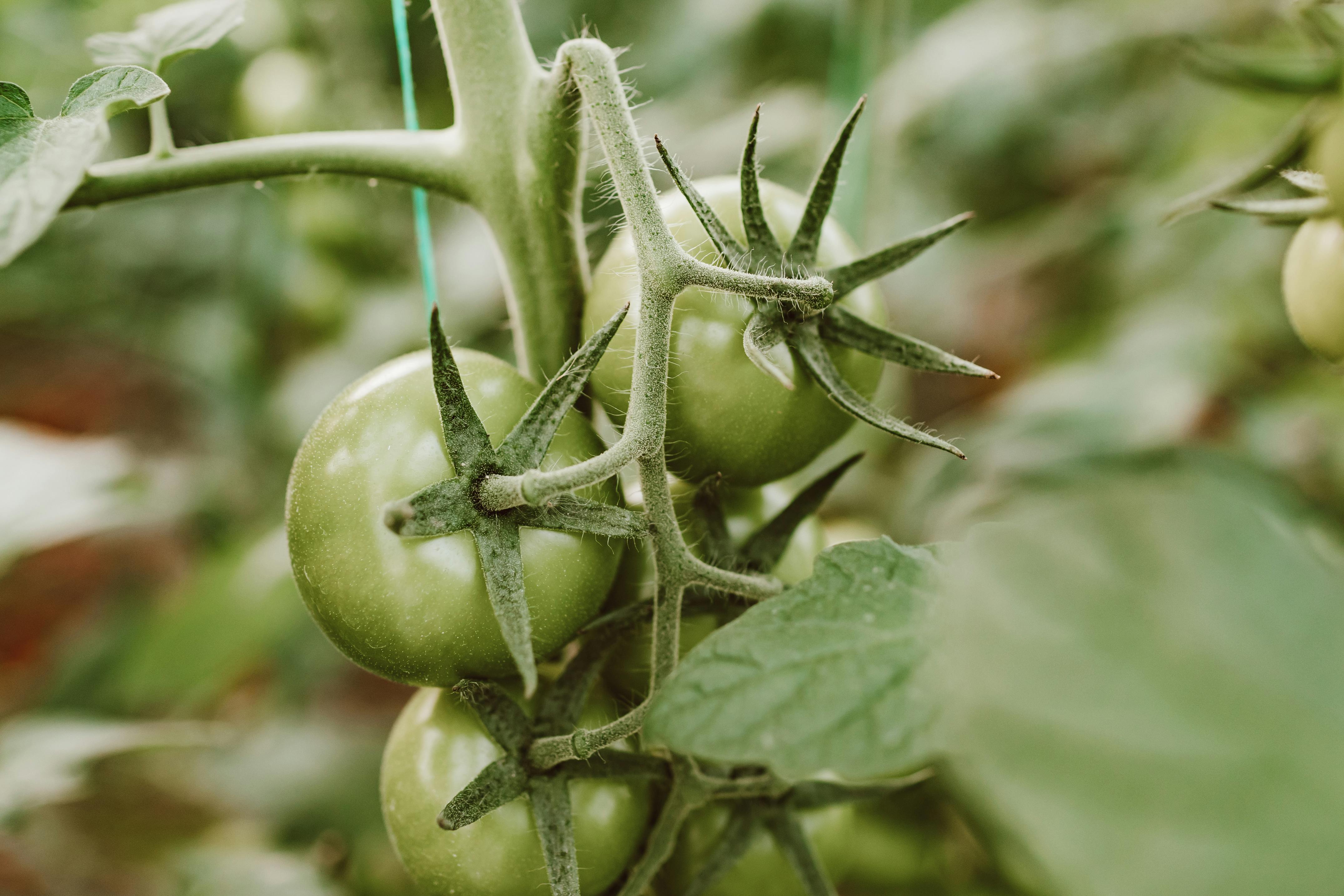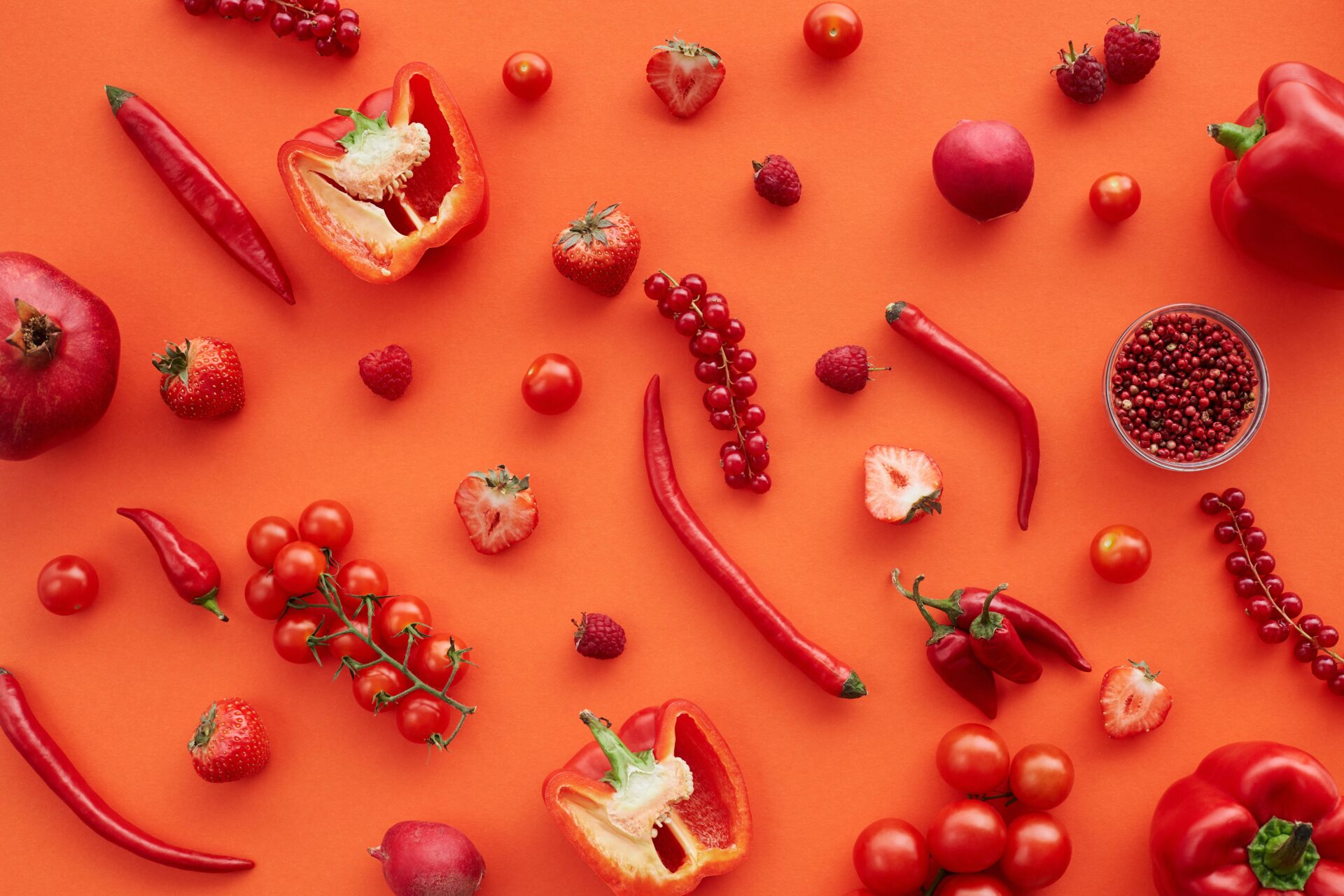Strawberries and tomatoes are two of the most popular and widely grown fruits and vegetables in home gardens. Knowing how far apart to plant them is essential for ensuring that they have enough space to grow and thrive. In this article, we will discuss the ideal spacing for both strawberries and tomatoes so you can get the most out of your garden.The recommended planting distance for strawberries and tomatoes is 18-24 inches apart (45-60 cm). For rows, keep the spacing at least 3 feet (1 m) between each row.
Soil Quality
When planting strawberries and tomatoes, it is important to consider the quality of the soil. Strawberries prefer soil that is fertile, well-drained, and slightly acidic, while tomatoes need soil that is rich in organic matter and full of nutrients. Additionally, both plants require soil with good drainage to ensure their roots do not become overly saturated with water. It is also important to test the pH balance of the soil before planting any crops.
Location
The location in which you decide to plant your strawberries and tomatoes also plays a role in their success. Both plants prefer full sun exposure throughout the day for optimal growth. Additionally, strawberries should be planted in an area of your garden that does not receive too much wind as this can cause damage to the plant’s leaves. Tomatoes should be placed away from any other susceptible crops in order to reduce the risk of cross-contamination from diseases or pests.
Watering
In order for strawberries and tomatoes to thrive, they must receive adequate amounts of water. Strawberries should be watered on a regular basis during dry periods as they are sensitive to drought conditions. Tomatoes require more frequent watering than strawberries but should only be watered when the top few inches of soil are dry. Additionally, it is important to water both plants at the base instead of overhead as this can promote fungal growth on their leaves.
Fertilizer
Applying fertilizer is another factor that needs to be considered when planting strawberries and tomatoes. Strawberries benefit from fertilizers that are high in nitrogen while tomatoes need fertilizers that are high in phosphorus and potassium for optimum growth. Additionally, both plants should have access to compost or mulch during their growing season as this helps retain moisture in the soil and prevent weeds from encroaching on your crops.
Recommended Planting Distances for Strawberries and Tomatoes
When planting strawberries and tomatoes, it is important to understand the recommended planting distances so that the plants have adequate space to grow and flourish. Strawberries should be planted approximately 12 inches apart from each other in rows that are about 3 feet apart. Tomato plants should be planted 24 inches apart with rows spaced 3-4 feet apart. Both of these plants require adequate air circulation, full sun, and plenty of nutrients for optimal growth.
When planting strawberries, it is best to create raised beds with an 8-10 inch depth so that the soil is well drained. It is also important to remove any weeds or other debris from the area before planting. For tomatoes, it is important to use a good quality potting mix or soil as well as a trellis or stakes for support. Both plants should be watered regularly and fertilized as needed for optimal growth and production.
Overall, proper spacing between strawberry and tomato plants is essential for healthy growth and production. By following the recommended planting distances, gardeners can ensure that their plants have enough room to develop properly while also creating an attractive landscape display in their yard or garden.
Maximizing Space When Planting Strawberries and Tomatoes
Gardening is a great way to bring nature into the home. But when space is limited, it can be difficult to figure out how to get the most out of a small area. One way to maximize space when planting strawberries and tomatoes is to use vertical gardening techniques. Vertical gardening allows for more plants in a smaller area by stacking them vertically instead of horizontally. This can be done with trellising, stakes, cages, or other support systems.
Another way to maximize space is through companion planting. Companion planting is the practice of pairing different plants together in order to enhance their growth and productivity. For instance, strawberries and tomatoes can be planted close together as they don’t compete for resources like water or nutrients. Additionally, tomatoes will help repel pests that may harm strawberries and vice versa.
Container gardening is also a great way to make the most out of limited space when planting strawberries and tomatoes. Containers come in all shapes and sizes, so it’s easy to find one that fits your needs. Plus, containers are easily movable so you can adjust your garden setup as needed throughout the growing season.
Finally, pruning and training are essential for maximizing space when planting strawberries and tomatoes. Pruning helps keep plants from becoming overgrown while training involves guiding plant growth along specific paths so that more plants can fit into a smaller area. This means that you can grow more food in less space without sacrificing quality or quantity of yields.
Overall, there are many different ways to maximize space when planting strawberries and tomatoes. By using vertical gardening techniques, companion planting, container gardening, and pruning/training techniques you can squeeze the most out of any small area while still enjoying delicious fruits from your garden!
Strawberries and Tomatoes Planting Spacing
When it comes to planting tomatoes and strawberries together, the spacing requirements are important for healthy plants and a successful harvest. Strawberries should be planted approximately 18 to 24 inches apart, while tomatoes need around 24 to 36 inches of space between them. The actual spacing will depend on the variety of tomato and strawberry being grown, as some varieties may require more or less space. It is also important to consider the size of the plants when they are mature, as this will determine how much room they need to grow without overcrowding.
When planting strawberries and tomatoes together in a raised bed it is important to keep the rows of each crop separate. The rows should be arranged perpendicular to each other so that one row of strawberries is not directly behind a row of tomatoes. This will ensure that both crops receive the necessary amount of sunlight throughout the day. Additionally, it is important to make sure that water does not pool around either crop as this can lead to fungal diseases such as tomato blight or root rot on the strawberries.
Finally, when growing strawberries and tomatoes together in a garden or raised bed, it is important to practice crop rotation every few years. This will help reduce disease pressure and help keep pests under control. It is also beneficial for soil fertility since different crops take up different nutrients from the soil. By rotating different crops in different parts of the garden each year, you can ensure that your strawberry and tomato plants get all of the nutrients they need for strong growth and high yields.

Benefits of Planting Strawberries and Tomatoes Separately
Planting strawberries and tomatoes separately has many advantages. One of the main benefits is that you can prevent diseases from spreading to your other crops. When planting strawberries and tomatoes together, diseases can spread quickly, negatively affecting both crops. By planting them separately, you are able to keep the diseases contained and reduce their impact on the other crop.
Another benefit of planting strawberries and tomatoes separately is that it allows for more efficient harvesting. When planted together, it can be difficult to harvest each crop without damaging the other one. By separating them, each crop can be harvested without risking damage to the other one.
Additionally, planting strawberries and tomatoes separately allows you to better control the soil conditions for each crop. Different crops require different levels of moisture in the soil; by planting them separately, you are able to ensure that each crop gets the ideal amount of moisture for optimal growth.
Finally, when planting strawberries and tomatoes separately, you are able to optimize their growth with different fertilizers. Different types of fertilizers are designed for different types of plants; when they are planted together, it is difficult to ensure that each plant is getting the optimal nutrition that it needs. By separating them, you can use different fertilizers for each type of plant so they get exactly what they need in order to grow healthily and yield a good harvest.
Different Varieties of Strawberries & Tomatoes: Distances to Consider
When it comes to growing different varieties of strawberries and tomatoes, there are a few things to consider. The most important factor is the distance between plants. Strawberries and tomatoes both require plenty of space between plants to ensure good air circulation and prevent disease. Tomatoes in particular need to be spaced further apart than strawberries due to their larger size. Both plants also require different soil types, so it is important to choose the right type for each variety.
In addition, the amount of sunlight should be considered when planting different varieties of strawberries and tomatoes. Some varieties require more direct sunlight than others, so it is important to pick the right location for each variety. Temperature can also affect how well a plant grows, so some varieties may need protection from extreme temperatures or direct heat sources such as a south-facing window or a patio umbrella during hot summer days.
Finally, when planting different varieties of strawberries and tomatoes, it is important to consider how long they take to mature and produce fruit. Strawberries typically take around three months from planting to harvesting ripe fruit, while tomatoes can take much longer depending on the variety chosen. Knowing this ahead of time can help plan out when you will be able harvest your crop and plan other activities accordingly.
Overall, when growing different varieties of strawberries and tomatoes it is important to consider distances between plants, soil requirements, sunlight requirements, temperature needs and maturation times before planting in order to get the best results from your crop. With careful planning and consideration ahead of time you should have no problems producing delicious fruits for years to come!
Companion Planting with Strawberries & Tomatoes: How Far Apart?
Companion planting is a great way to make your garden more efficient and productive. Strawberries and tomatoes are two of the most popular vegetables for companion planting, but it’s important to know how far apart you should plant them. When planted too close together, the two plants can compete for light, water, and nutrients, leading to poor yield and lower quality produce. On the other hand, when planted too far apart, the plants may not be able to take advantage of each other’s beneficial qualities.
The ideal distance between strawberries and tomatoes for companion planting will vary depending on the size of your garden and the variety of strawberry you are growing. Generally speaking, it is recommended that you plant strawberries at least 12 inches away from tomatoes in order to give them enough room to grow without competing for resources. For smaller gardens or dwarf varieties of strawberry, it may be possible to plant them closer together as long as there is plenty of space between individual plants. If necessary, you can also add a trellis or support structure to help keep the plants separate.
In addition to spacing your plants correctly, it’s important to remember that both strawberries and tomatoes need plenty of sunlight in order to thrive. Make sure that both plants have access to at least six hours of direct sunlight every day in order to get the best results from companion planting. Also keep in mind that tomatoes require significantly more water than strawberries, so make sure that they are getting enough water during dry spells.
By following these tips for companion planting with strawberries and tomatoes, you can ensure that your garden is as productive as possible while still providing enough space for each plant to thrive. With a little bit of planning and care, you can enjoy juicy strawberries and delicious tomatoes all summer long!

Conclusion
When planting strawberries and tomatoes, it is important to keep the plants at least 18 inches apart. This allows for adequate room for the plants to grow and reduces the chances of diseases spreading between them. In addition, it is beneficial to plant them in separate beds or containers as this will further help to prevent cross-contamination. Tomato and strawberry plants both require a lot of sunlight, so make sure that when you are deciding where to plant them, you take into account how much sun each spot receives. With proper care and maintenance, both tomatoes and strawberries can be grown successfully and produce delicious fruits.
Finally, it is important to remember that when planting strawberries and tomatoes together, it is best to plant them a minimum of 18 inches apart in order to ensure optimal growth for each type of plant. This will also reduce the risk of disease transmission between the two crops. With careful planning and thoughtful consideration given to their placement in your garden, you can enjoy a bountiful harvest of both strawberries and tomatoes.



